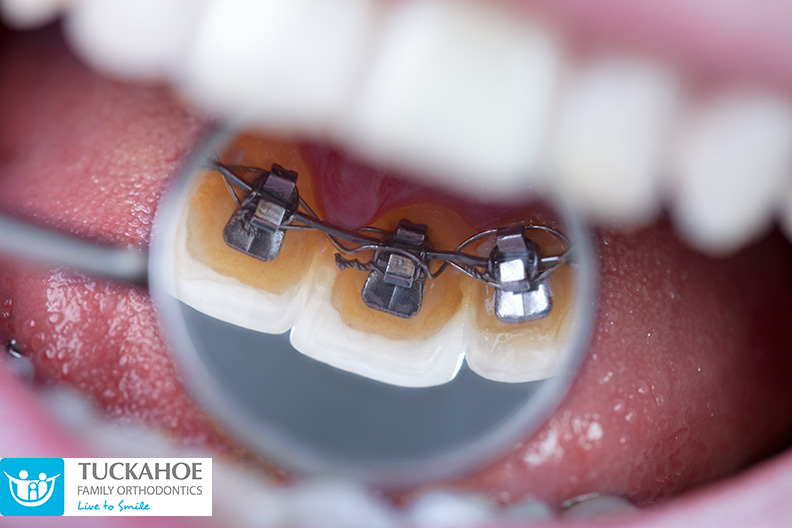Legacy Orthodontics - Questions
Legacy Orthodontics - Questions
Blog Article
The 9-Minute Rule for Legacy Orthodontics
Table of ContentsGetting My Legacy Orthodontics To WorkThe Basic Principles Of Legacy Orthodontics The 15-Second Trick For Legacy OrthodonticsLegacy Orthodontics Can Be Fun For EveryoneGetting The Legacy Orthodontics To Work
At Advanced Orthodontics, we provide individuals with a alternative treatment experience. Furthermore, we provide adjustable therapy schedules, adaptable settlement options and an enjoyable, pleasurable experience. leesburg clear braces. Telephone call ( 480) 357-4900 today for even more information and schedule an appointment.An orthodontist is a dental practitioner trained to identify, protect against, and deal with teeth and jaw irregularities. Orthodontists function with people of all ages, from youngsters to adults.
Malocclusion, or misaligned teeth, can lead to oral issues, consisting of dental cavity, gum tissue illness, and difficult or unpleasant eating. Not everyone is birthed with straight teeth. If you have a bad bite or big areas in between your teeth, you may want to seek advice from a dental practitioner concentrating on orthodontic treatment.
3 Easy Facts About Legacy Orthodontics Shown
( Picture Debt: DigitalVision/Getty Images) Orthodontists use repaired and detachable oral devices, like braces, retainers, and bands, to change the position of teeth in your mouth. Orthodontic therapy is for oral abnormalities, including: Uneven teethBite problems, like an overbite or an underbiteCrowded teeth or teeth that are too far apartJaw misalignmentThe goal of orthodontic therapy is to improve your bite.
A healthy bite ensures you can eat, chew, and talk properly. While you might consider orthodontists as primarily for kids or teens that require dental braces, they can remedy oral troubles at any kind of age. Orthodontists attend university, oral school, and orthodontic school. After graduation, they invest 2 or 3 years in an orthodontic residency program.
All orthodontists are dentists, however not all dentists are orthodontists. Orthodontic residency programs supply extensive, focused direction for dental specialists. They concentrate on two areas: Just how to correctly and safely relocate teeth Exactly how to correctly guide growth in the teeth, jaw, and faceOnce an orthodontist has actually completed training, they have the option to become board accredited.
The Main Principles Of Legacy Orthodontics
Misalignment, or malocclusion, is one of the most typical reason individuals see an orthodontist. It is genetic and is the result of size distinctions in between the upper and reduced jaw or in between the jaw and teeth. Malocclusion brings about tooth congestion, an irregular jaw, or uneven bite patterns. Malocclusion is typically treated with: Your orthodontist affixes metal, ceramic, or plastic square bonds to your teeth.
If you have only minor malocclusion, you may be able to use clear dental braces, called aligners, instead of standard braces (https://issuu.com/legacyortho). Some people need a headgear to aid move teeth into line with stress from outside the mouth. After braces or aligners, you'll need to put on a retainer. A retainer is a personalized device that keeps your teeth in position.
They're most usually used on kids. They can develop added area in the mouth without needing to draw teeth. If you have a major underbite or overbite, you might require orthognathic surgical treatment (likewise called orthodontic surgical treatment) to extend or reduce your jaw. Orthodontists use cables, medical screws, or plates to support your jaw bone.
You might need to see an orthodontist if you have: Crowding or not adequate space for all of your teethOverbite, when your top teeth come over your base teethUnderbite, when your bottom teeth are as well far forwardSpacing or concerns with gapsCrossbite, which is when your top teeth fit behind your base teeth when your mouth is closedOpen bite or a vertical gap between your front base and top teethMisplaced midline, when the facility of your bottom and top teeth don't line up Fixing a dental malocclusion can: Make biting, chewing, and speaking easierImprove the proportion of our face and your overall appearanceEase pain from temporomandibular joint conditionsDifferent your teeth and make them much easier to clean, aiding stop dental cavity or cavities It's typically a dental professional that initially notifications misaligned teeth throughout a routine exam.
The Only Guide to Legacy Orthodontics

Throughout your very first orthodontic examination, you'll likely have: An oral examPhotos taken of your face and smileDental X-raysPanoramic (360 degree) X-rays of your face and headImpressions to create mold and mildews of your teethThese examinations will certainly help your orthodontist understand just how to wage your treatment. orthodontist. An orthodontist is a dental professional who's had training to treat your teeth and jaw
An orthodontist is focused on your bite, so something like a damaged tooth would be taken care of by a dental professional. Orthodontists are concentrated on your bite, or the way your teeth fit with each other, and the straightness of your teeth.
Ever questioned how celebrities constantly seem to have completely straightened teeth? The solution often exists in the skilled hands of an orthodontist. But exactly what does an orthodontist do? Orthodontists are oral specialists that focus on correcting abnormalities in the teeth and jaws. Their experience goes beyond simply developing an attractive smile; it prolongs to boosting your overall oral health and function.
Legacy Orthodontics - The Facts

, orthodontists have a varied toolkit at their disposal. These tried-and-true braces use a system of braces bound to the teeth and attached by cords.
Clear aligners, like Invisalign, are a popular alternative for individuals looking for a more very discreet therapy alternative. These detachable trays are customized to progressively shift the teeth's setting. Headgear might be made use of together with braces or aligners to use added targeted forces, particularly for correcting jaw discrepancies. In instances of slim jaws, palatal expanders can be made use of to produce space for correct tooth placement.
Report this page